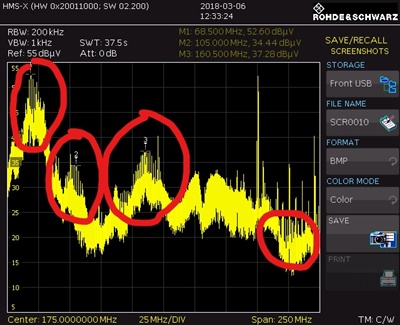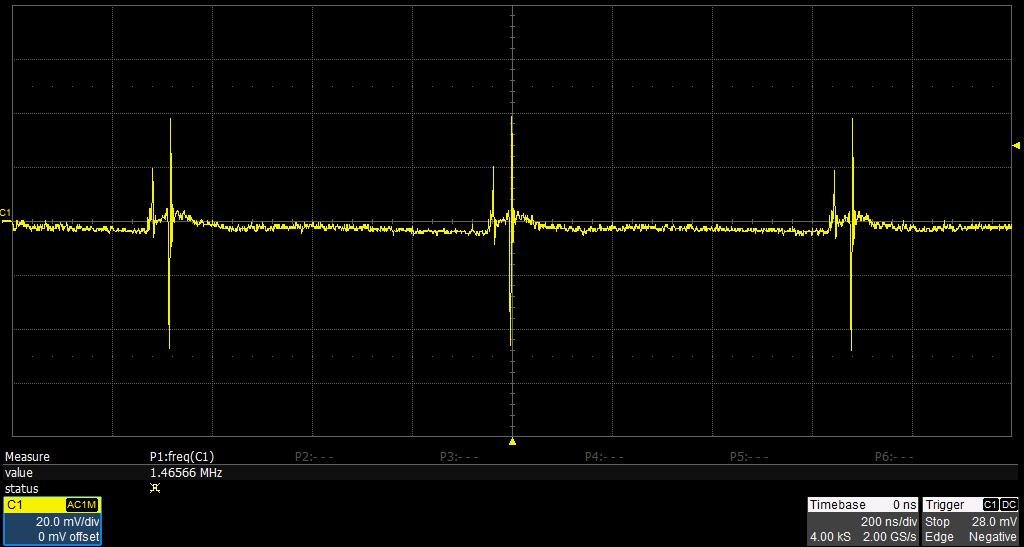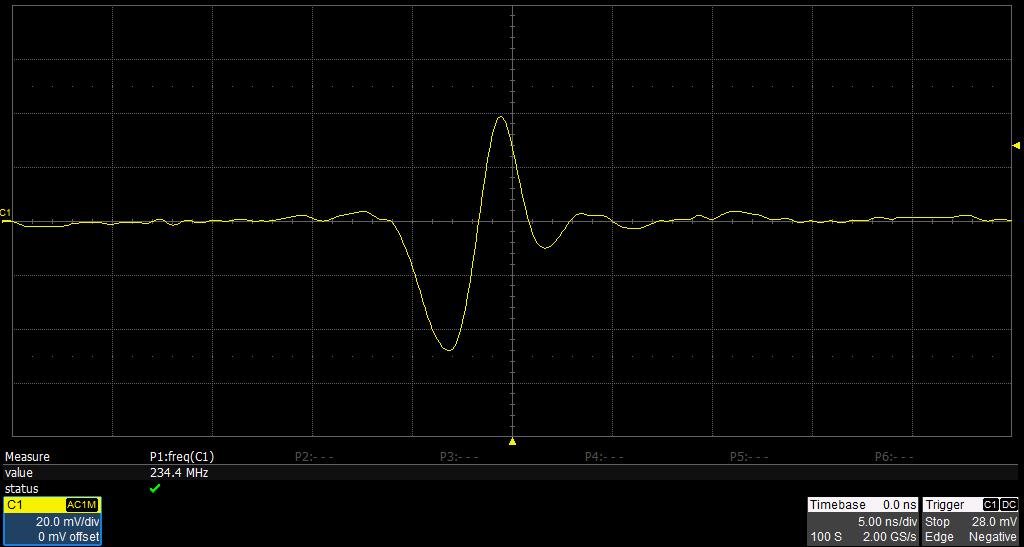Hi,
My input (VBUS) appears to be oscillating between ~200 - 300 MHz depending on the load & supply.
I have tried adding a ferrite bead at the input, changing and adding input capacitance.
All appear to just shift the frequency around a bit, nothing reduces it.
Kind Regards,
Mark Burton




